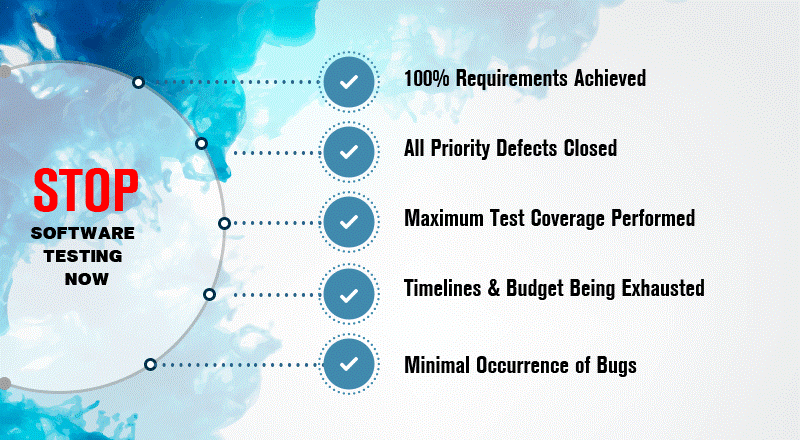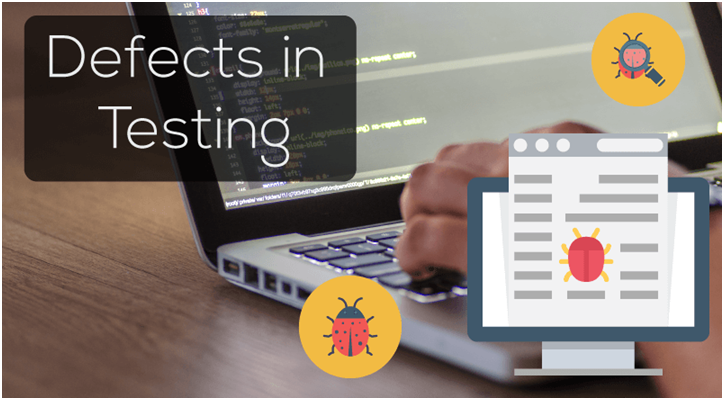As a responsible and mature tester, is it ever feasible for you to say that your software is now cent % bug-free and reliable? It is one of the toughest statements to make and that too as a tester, to own that responsibility is a big burdensome task. But, does that really mean that you keep testing all the while with no finishing line in front of you? No, it surely does not. There are ways and means by which you can definitely judge the exit criteria of software testing and perceive if it is required further or not. For any Third-Party Software Testing Company, however much you have software testing kicked off at an early start during the project, only because it is in charge of extracting errors, it does not mean software testing has no end at all. It is a general myth that software testing has to keep continuing till the last moment at which the software actually goes to the client for implementation.
Yes, there are no pre-defined formulas to set criteria that can be used as stringent parameters to ascertain the exit criteria for software testing or rather, prove that your software does not need any more quality assurance. But, there are certain parameters, which with experience, can be used to judge the time to say Stop to Software Testing. For any Third-Party Software Testing & QA Company, with Software QA Services being an important ingredient in software development, though not proven or exhaustive, with lots of experience to support, these checkpoints do help in attaining the finish line to testing.
5 Key Questions that Aid in Saying Stop to Software Testing
Whatsoever may be the type of software project or testing schedules, tools and technologies involved, as a Third Party Software Testing Company, ask these 5 basic questions and if you get an affirmative answer to these, you can perceive that it is high time you stop your software testing and trust it to be worthy to be implemented for your customer.
- Are 100% Requirements Achieved?
After all, this is why any software project is conceived, developed, and implemented? The basic criteria to see if software testing is being performed to its fullest is to ensure if all the requirements as stated by the customer are being met or not. It is vital to map each user requirement with functionality in the software so as to ensure no missing links. Once this is 100% achieved, we can say complete requirements coverage is accomplished and this can be set as a basic parameter to exit software testing
- Have All Priority Defects Been Closed?
It is worthless to say that there are zero defects in any software. However rich is the QA or intensive is the software testing procedure, there are chances of bug occurrence at any point of time. Defects or bugs could be falling under different priority levels – high, medium, or low. So far as the elimination of these bugs goes, it is the duty of the testing teams to ensure not a single defect is pending. But, at a certain level, what is of importance is to achieve full rectification of all major/high-level bugs. There could be chances wherein you may have to permit a few negligible bugs, which do not have any implication on the software performance to continue or to be treated later.
- Is Maximum Test Coverage Performed?
Keeping in mind the real-life scenario and practical aspects of any software project, to attain 100% Test Coverage is next to impossible. Then, does that mean you keep continuing software testing till you attain this level? Absolutely not! It is not feasible to do so, keeping the timelines of delivery and implementation schedules intact. Any good testing team needs to set up a few parameters regarding Test Coverage that should be met, like greater than 95% test coverage/passing of test cases, clearing of all critical test cases, failure of test cases only to a limit of 5%.
- Are Timelines & Budget Being Exhausted?
After all, each and every project has a certain predefined timeline and budget associated with every phase of the project. Even the software testing phase has its set deadline and cost attached to it. If you feel it is getting exhausted, it is definitely not worth surpassing it, unless and until there are major warnings still pending to be resolved, those which could harm the smooth functioning of the system.
- Is There Minimal Occurrence of Bugs?
The higher the complexity of the software solution, the higher is the chances of bugs hiding inside. That is where the role of the tester is most significant – in extracting the most possible bugs/defects of all priorities and all levels in the stipulated time frame before it reaches your customer. But, a tester is no God Almighty and so, there are chances of hidden bugs remaining in the software. You cannot do anything about it. Yes, what at the maximum you can try is ensuring the minimal occurrence of those bugs. Because all bugs may not get stimulated at all, they may arise in unforeseen circumstances but they should be such that may not affect the software in a significant way.
SPEC QA offers independent QA and Testing Services across the complete software release lifecycle. We guarantee a process-driven approach in all our quality assurance practices and software testing services.
Our Software Testing Solutions make certain an accurate blend of Manual and Automated Testing and provide support through the Testing Life Cycle. As a Third Party Software Testing Company in India, we possess skilled resources in Automated Testing tools like Selendroid, Selenium, Appium, Robotium, Quick Time Pro, etc., and Performance tools like JMeter, hp Loadrunner, BlazeMeter, etc. which help in simulating scenarios and performing continuous routine mundane tests.
With a stringent focus on quality and processes, we have been implementing several testing projects in a multitude of technologies.
Request for a Free POC to test-drive our services.






